In 1911 a Dutch physicist call Heike Onnes was investigating the electrical resistance of metals at very low temperatures. He cooled down Mercury down to about 4.2K (or -269°C) and discovered that the resistance appeared to disappear. This was an extremely surprising result, a bit like friction suddenly falling to zero. He called this effect superconductivity as the mercury showed perfect conductivity. He later discovered that lead superconducts at 7K (-266.2°C) and since another 20 elements have been found to superconduct if you cool them far enough.
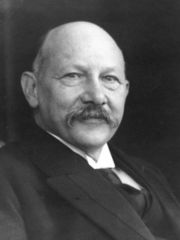 |
| Heike Onnes the discoverer of Superconductivity |
Superconductivity remained an interesting curiosity as noone could explain it and the superconductivity broke down under quite small magnetic fields. This meant it was not useful for carrying large electric currents which produce magnetic fields, ruining the superconductivity, and cooling them would not have been practical for a long time anyway.
You would expect that a perfect conductor would have some interesting magnetic properties, because if you move a magnet near a conductor you induce a circulating current (this is how a generator works) and if there is no resistance this current will continue to flow forever. A circulating current is an electromagnet which will act against any movements by the magnet, so if you move a magnet near a superconductor it will float.
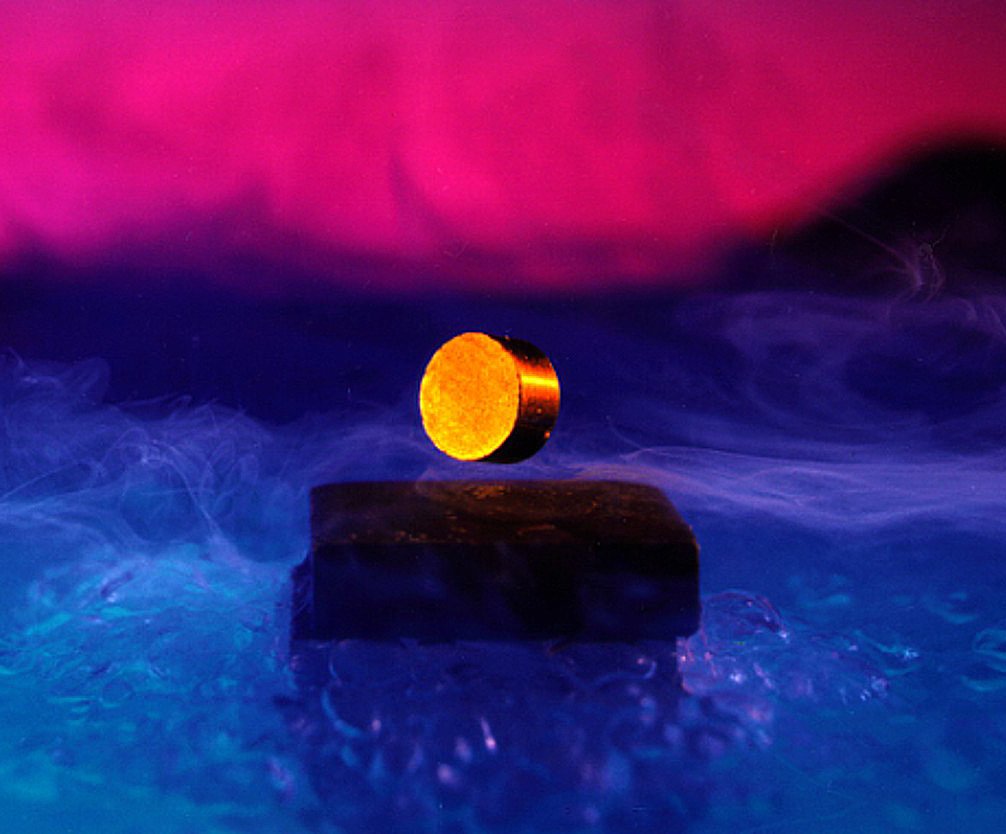 |
| A levitating magnet over a superconductor©Pacific Northwest National Laboratory |
In 1933 Meisner discovered that some superconductors were even more complex than this. As you cool them down they will start to repel a magnet even if the magnet doesn't move. So there can be no induction of currents, they just start flowing of their own accord. This spooky effect can't be explained by conventional physics so theorists had to resort to quantum mechanics.
During the 1950's the understanding of superconductors slowly got more sophisticated through the work of Landau and Ginzberg and then Bardeen, Cooper and Schriefer. They came up with a theory that explained superconductivity as being due to an interaction between the electrons and the lattice of atoms in the material. This interaction causes the electrons to be weakly attracted to one another. The electrons to form pairs (known as Cooper Pairs). Electrons are known as fermions which means no two electrons can be in the same state (the same position energy and momentum) which is why matter doesn't always collapse down under gravity to form black holes. However there is no such constraint on a pair of electrons, so all the superconducting electrons can fall into the same state. This is very closely related to a Bose-Einstein condensate, which is the same effect but for whole atoms.
In a superconductor the energy that the cooper pairs occupy occurs in the centre of a series of energies that electrons cannot exist in (think of it as being between two energy levels in an atom), this is known as the energy gap. For an electron to loose energy to electrical resistance it has to be able to change energy, because the cooper pairs are sitting in the middle of an energy gap they can't exist in any other energy, so the electrons can't loose energy hence there is zero resistance.
This theory predicted that the maximum temperature that a superconductor could function at was about 30K (-247°C). This meant that there was somewhat of a shock in 1986 when there a superconductor discovered which became superconducting at 35K and others rapidly developed at 92K (Yittrium Barium Copper Oxide) with the current record set at 138K in 1993.
All these very high critical temperature (high Tc) superconductors are ceramics based around sheets of Copper Oxide with other atoms in between the sheets. The resulting superconductivity is extremely directional which means that any junction between two crystals must be aligned correctly which is a very difficult materials science problem, and is probably the main reason that high Tc supercondutors are only starting to be used commercially 20 years after their discovery.
Unfortunately in general the higher the Tc of the superconductor the less resistant to magnetic field it is and therefore the less current it can carry. Also the more complex the superconductor the bigger the manufacturing problem. So most superconductors used are still low Tc using liquid Helium to cool them, and the more common High Tc superconductors tend to have Tc's of around 90K. This means that they superconduct well in liquid nitrogen at 77K (-196°C) which is cheap and easily available.
One of the most recent development in superconductors was they discovery that Magnesium Diboride (MgB2) superconducts at 35K, this may not sound very impressive, but it superconducts in a non-directional way like the low temperature superconductors which makes the materials science relatively easy and the temperature whilst not very high, is still twice as good as the next best Low Tc superconductor which makes cooling it at least twice as easy. So it may well be a very useful material.
What are superconductors used for?
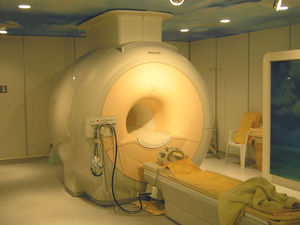 |
| Modern high field clinical MRI scanner.©KasugaHuang @ Wikimedia |
If you set up a current in a loop of superconductor there is nothing to stop it and it will continue flowing forever, forming a very powerful electromagnet, that needs no maintenance other than keeping them cold. The strongest man made permanent magnetic fields are produced using superconductors.
Superconducting magnets are used in MRI (Magentic Resonance Imaging) which is a way of looking at the soft parts of the body.
They are also going to be used in the new 'Large Hadron Collider' experiment at the CERN Particle Physics Lab. The idea is to accelerate protons and antiprotons to almost the speed of light in a circle and then smash them together. To keep the particles in a circle requires huge magnetic fields which can only be provided by superconductors.
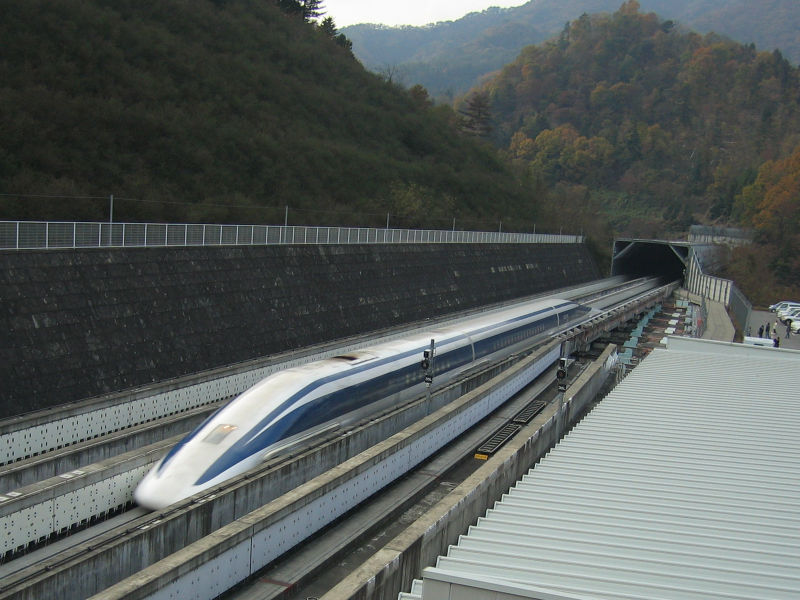 |
| The JR-Maglev uses superconducting magnets to levitate and for propulsion.©Yosemite @ Wikimedia |
It is also possible to use superconducting magnets to produce a levitating train. The idea is to put very powerful light superconducting magnets on the train, then use copper coils in the track which use repulsion to lift the train up to make it levitate. It is also possible to use the track magnets to push the train along. Because this force is not limited by friction between wheels and a track it is theoretically possible for a maglev train to go much faster and more importantly accelerate and brake faster than a conventional train. Various test maglev trains have been built, in Birmingham, Japan and Germany, although the only one used commercially is a german design built in Shanghi, which uses very strong permanent magnets instead of superconductors.
Superconducting Sensors
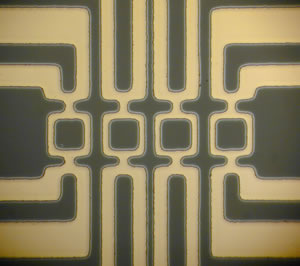 Due to a subtlety of the quantum mechanics of how superconductors interact with magnetic fields, it is possible to make the most sensitive magnetometers possible called SQUIDs (Superconducting Quantum Interference Devices). These can be used to detect submarines, measure the magnetic field produced by your brain, find ore deposits deep underground, sense minute signals from stars etc.
Due to a subtlety of the quantum mechanics of how superconductors interact with magnetic fields, it is possible to make the most sensitive magnetometers possible called SQUIDs (Superconducting Quantum Interference Devices). These can be used to detect submarines, measure the magnetic field produced by your brain, find ore deposits deep underground, sense minute signals from stars etc.
Power Cables
An obvious use of superconductors would be to move power around, huge amounts of electrical energy are wasted just heating up power cables, and superconductors would help. However if you put alternating current through them they are no longer lossless, and it reqiures a lot of energy to cool them, so although it is possible they could be used to save energy in the long run in the short term it is more likely they will be used to save space, superconducting cables have been installed in Chicago and Copenhagen, in old cable ducts with restricted space, allowing you to get more power through the same duct, hence saving lots of money digging up the road. Similarly the US Navy is very interested in them for making small powerful electric motors to power ships with, because it is efficient to put the propellers on pods under the ship however the bigger the motor the more drag it produces, so a much smaller superconducting motor would be advantageous.
So superconductors may not be about to revolutionise the world like it looked in 1986, but they are becoming more and more useful in the modern world.
- Previous Nitrogen - The Bad Guy of Global Warming
- Next Superconductors









Comments
Add a comment